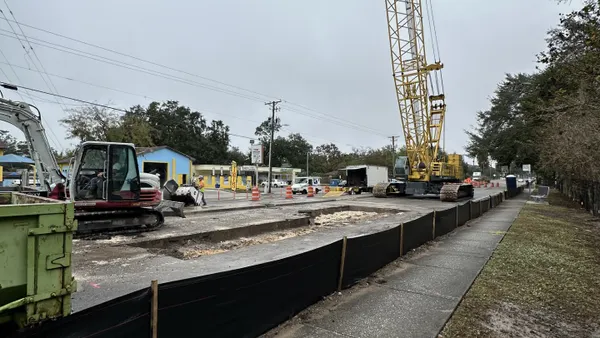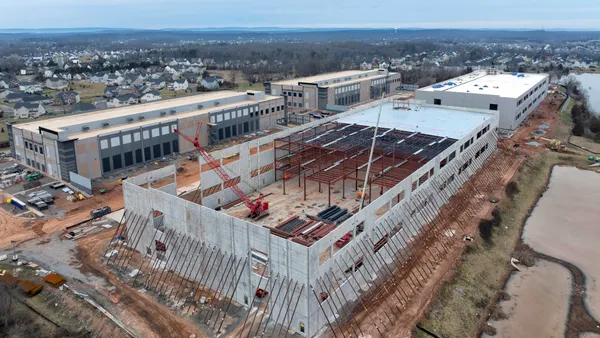Dive Brief:
- The Florida DOT (FDOT) announced last week that it will build a replacement for the pedestrian bridge that collapsed in March 2018 while under construction on the Florida International University campus in Miami. Six people were killed in the accident, which also injured eight others.
- The department said that it will oversee and manage the construction of the new bridge and will incorporate the recommendations offered up by the National Transportation Safety Board (NTSB) after its investigation into the collapse of the first bridge. The NTSB determined that the probable cause of the collapse rested with FIGG Bridge Engineers Inc. and the firm's design, an assertion that FIGG has contested with experts of its own.
- The design phase, which should last approximately two years, is scheduled to begin in early 2021. The FDOT did not provide an estimated construction start date but said the building phase of the project should also take two years. The project will also include new safety measures, including changes in how the department manages local agency program (LAP) projects and interacts with local project sponsors like FIU.
Dive Insight:
In its full report of the FIU bridge collapse, the NTSB noted that the FDOT gave the university full certification as a local agency under the LAP program even though it had no professional engineer on staff and relied solely on outside contractors and consultants, including FIGG, to handle design and construction. The NTSB also faulted the FDOT for not providing greater oversight of a project that included such a complex, nonredundant design.
The headline from the NTSB's report, however, was that load and capacity design calculation errors were the likely cause of the collapse. The board also pointed a finger at consulting engineer Louis Berger's failure to detect FIGG's mistakes in the design of a main truss span's connection to the structure's bridge deck, the spot that failed and resulted in the failure.
The agency also faulted the other consultants and contractors, including general contractor Magnum Construction Management (MCM), formerly known as Munilla Construction Management, for not recognizing the severity of cracks in the bridge before and after installation and for not acting to stop construction and the flow of traffic under the bridge. Eight cars were crushed as cars stopped under the bridge were waiting on a traffic light.
Since the collapse, MCM has filed bankruptcy in the wake of multiple lawsuits and the FDOT's revocation of its agency certification. The company and its insurance companies had to pay out approximately $42 million in settlements to survivors and victims' families.
FIGG, widely considered one of the country's foremost experts in bridge design, has faced extra scrutiny of its work since the collapse.
A COWI North America Ltd. report on the design of the $1 billion Ship Channel Bridge in Houston revealed about 21 areas of concern after the Harris County Toll Road Authority (HCTRA) requested a review. The deign team included FIGG, which said such reviews are common in bridge construction.
On another bridge project in the state, the $800 million Harbor Bridge in Corpus Christi, Texas, the Texas DOT (TxDOT) insisted that FIGG be removed from the project after transportation officials read the NTSB report on the FIU collapse. The agency said the NTSB's findings were "significant enough" to justify replacing FIGG.










